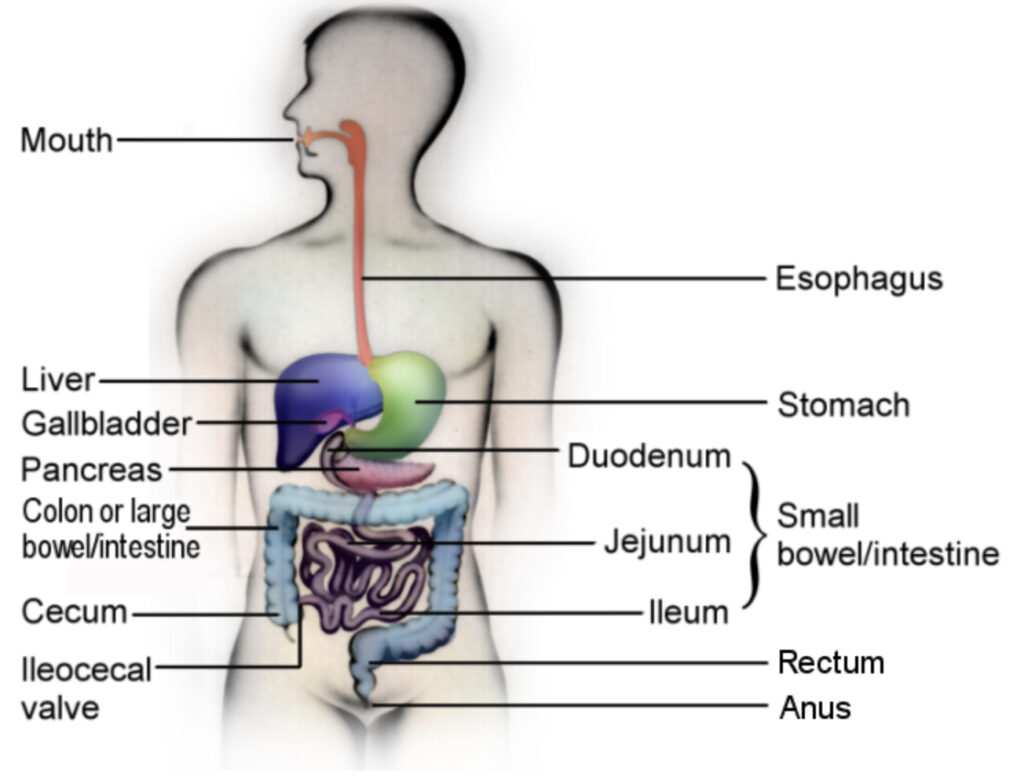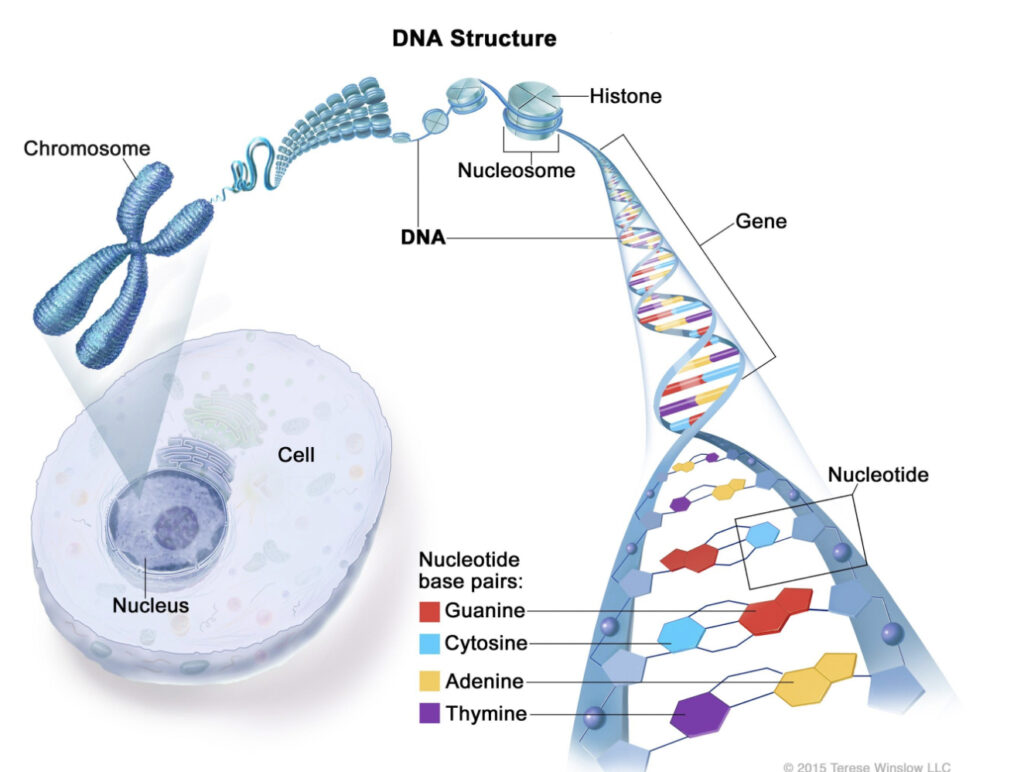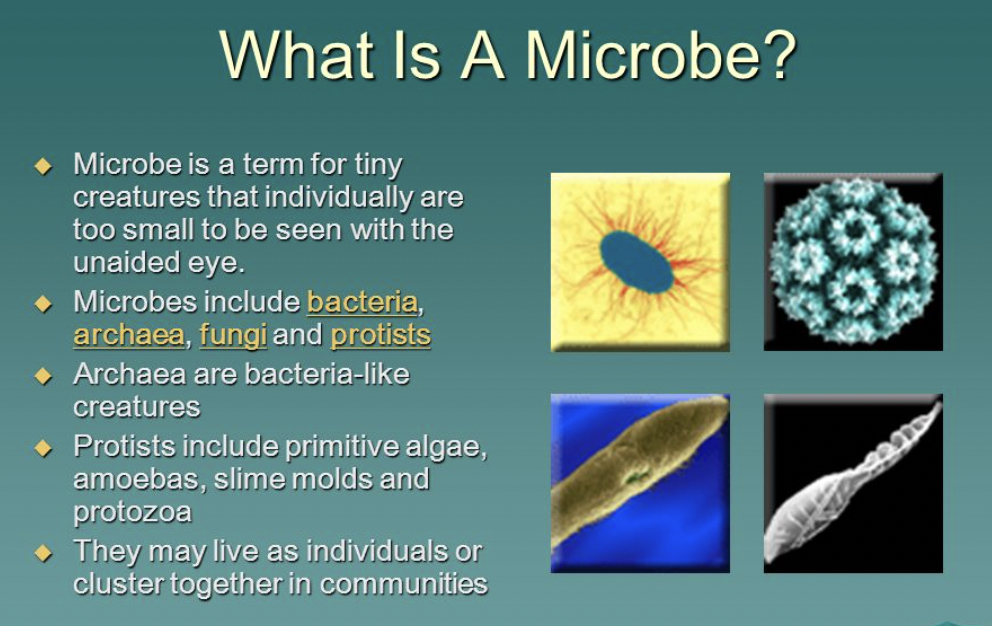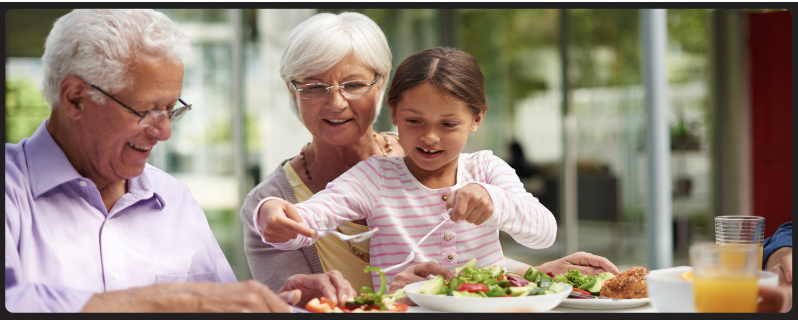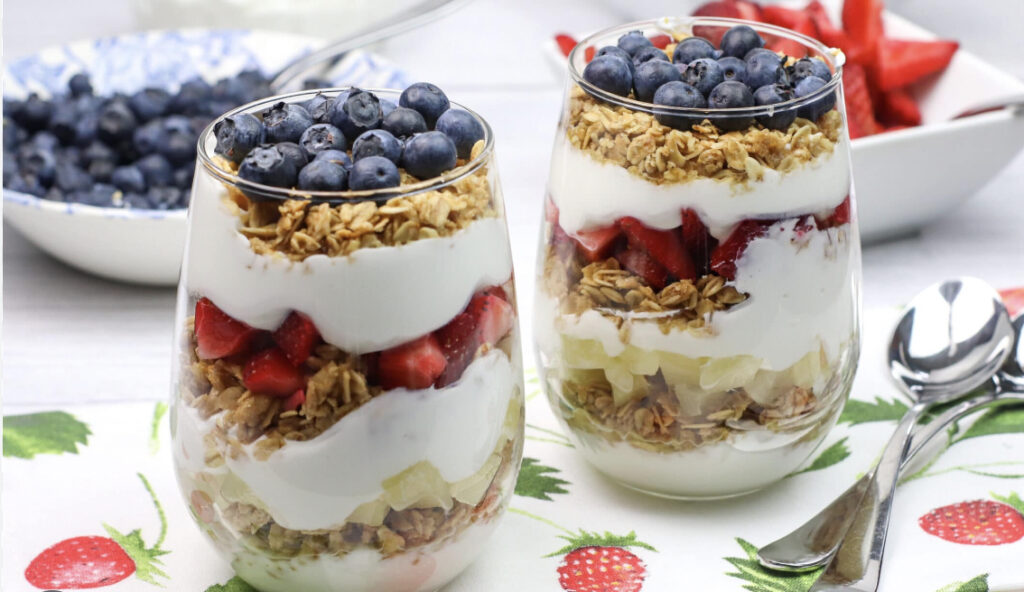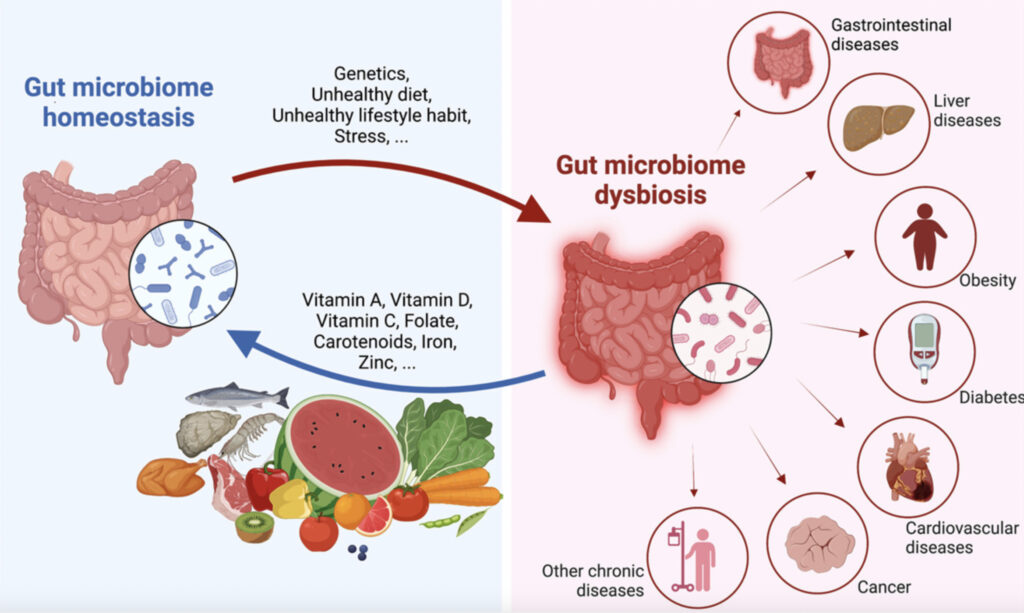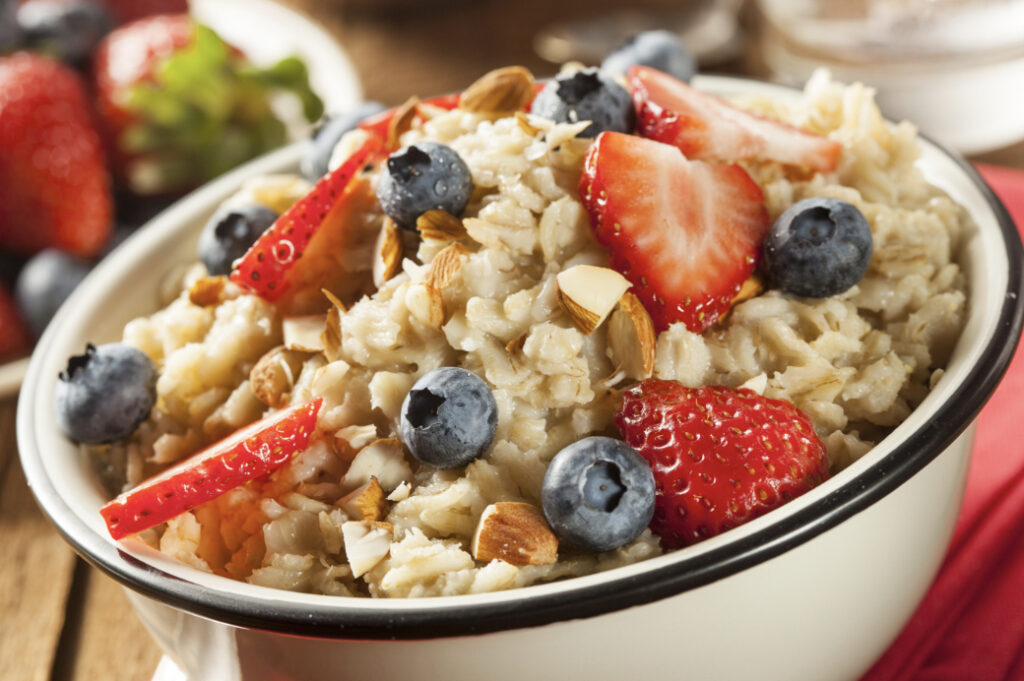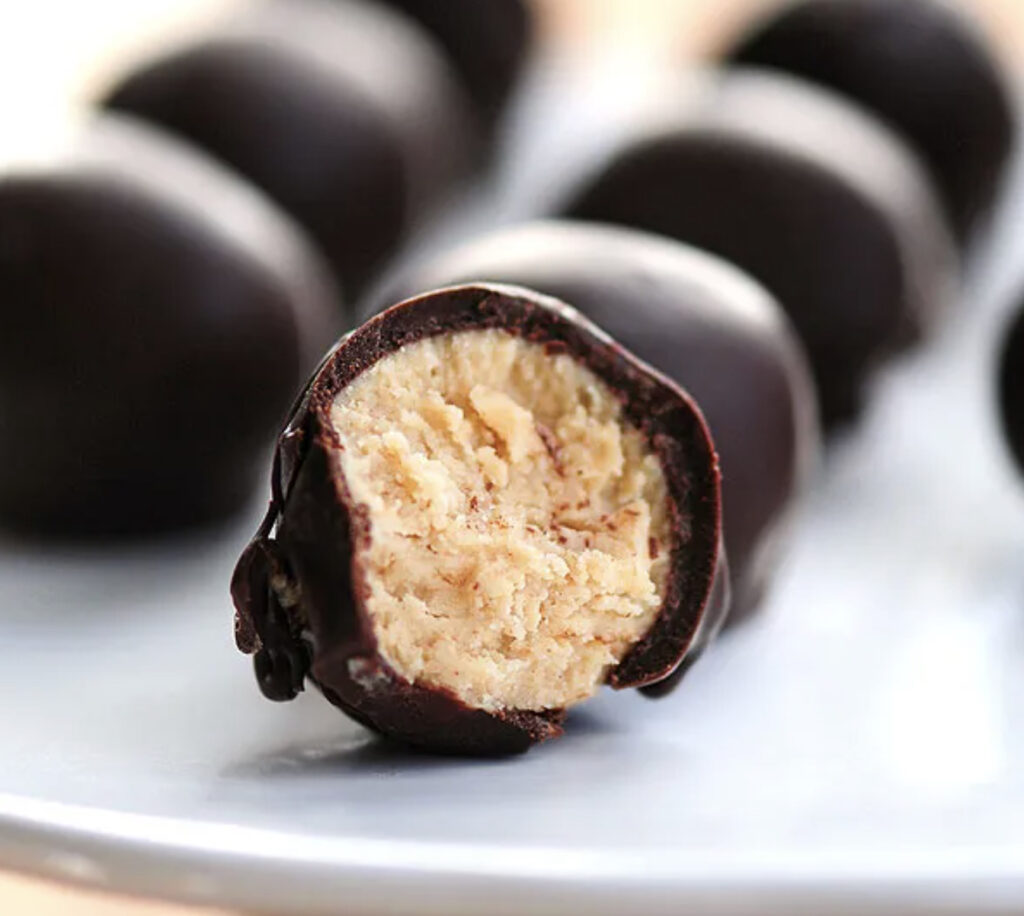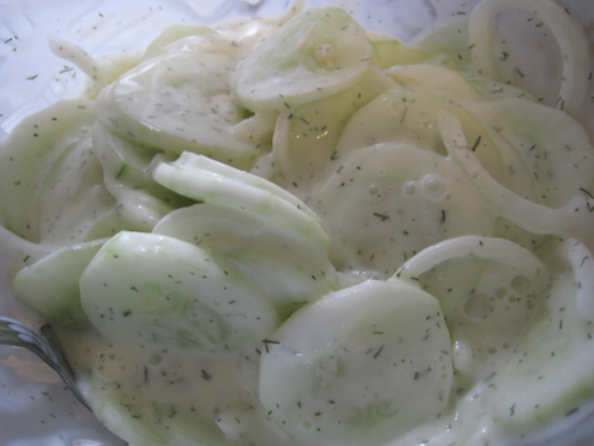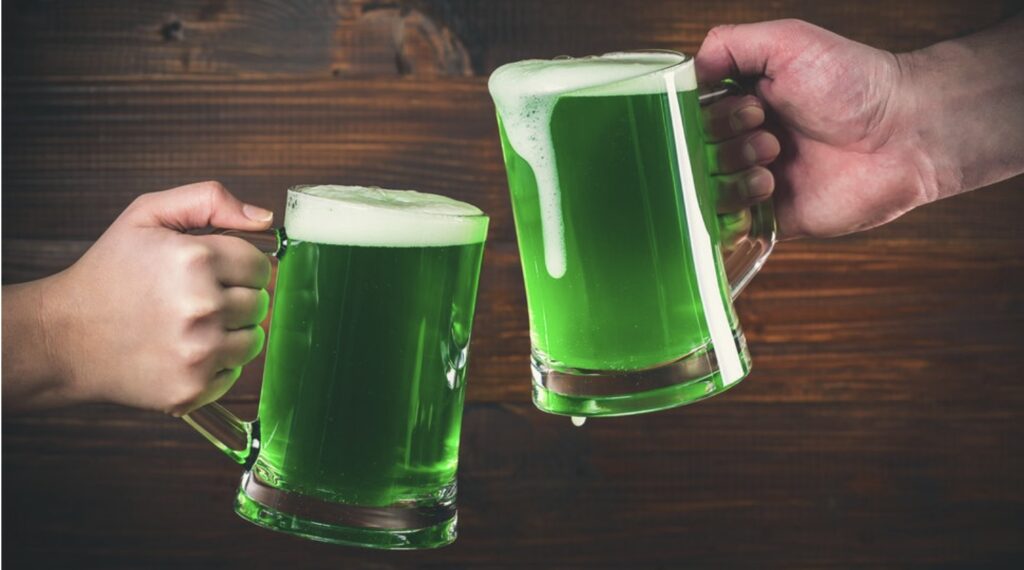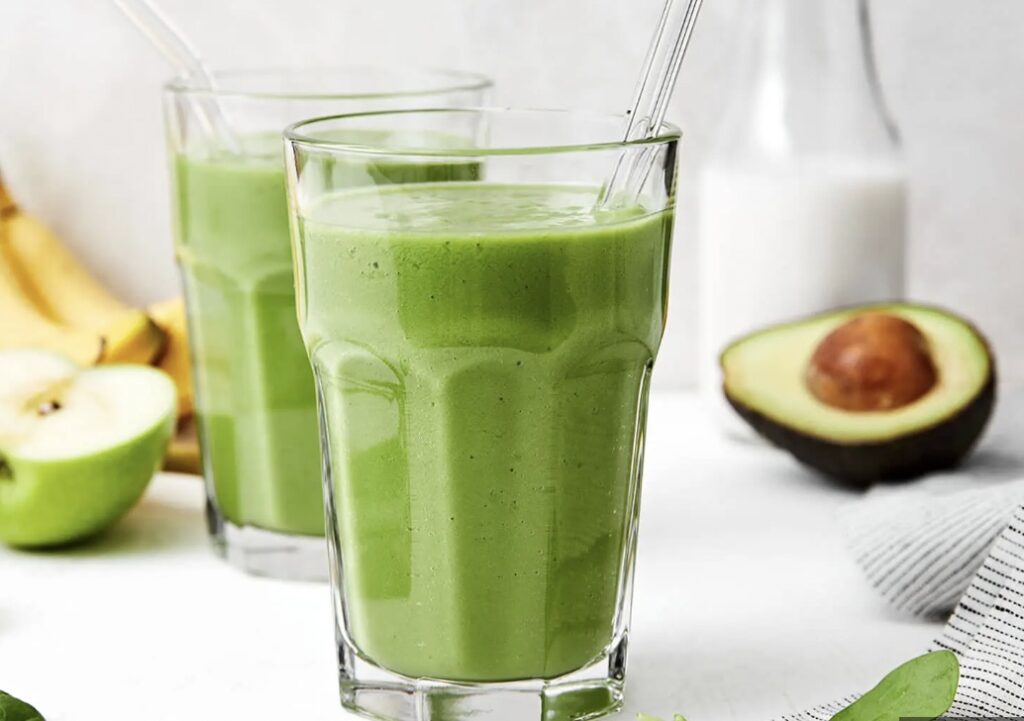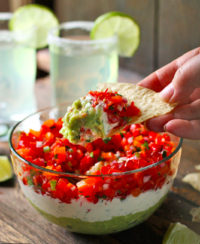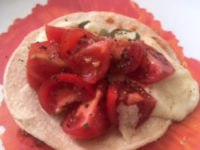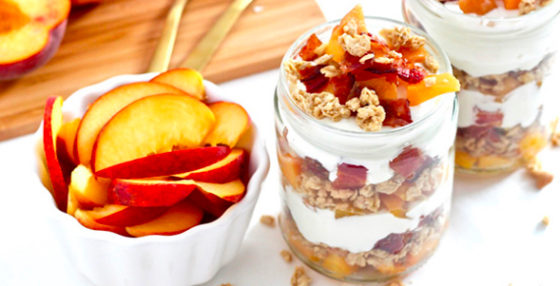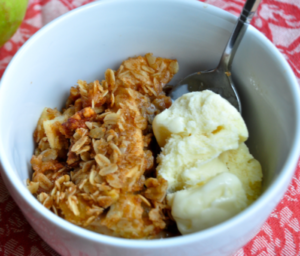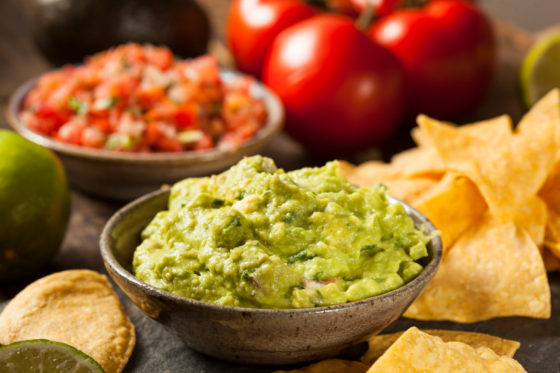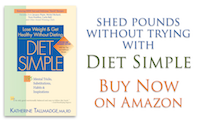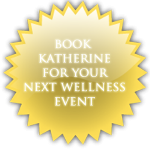The Perfect Storm: Battling the Blizzard Bloat Blues

These days you may have noticed a subtle expanding of yours and your friends’ waistlines. Take consolation in knowing you are not the only ones suffering from… “BLIZZARD BLOAT,” that creeping up of body fat that has hit many of us recently, according to an informal survey of frustrated, and slightly fatter colleagues and friends.
In the animal kingdom, fattening up for the cold winter months is critical for survival. For human animals, that leftover caveman-instinct to gorge on fattening foods, and hibernate, just causes trouble
Though these old instincts are plausible as a partial cause of winter weight gain, there are more complex—and controllable—causes too. The most important involve decreases in sunlight, physical activity, increases in cravings, and comfort eating. It’s the perfect storm of factors that create the calorie imbalance leading to blizzard bloat.
The Perfect Storm
- Physical Inactivity. When it’s cold outside, we tend to exercise less and even cut back on subtle calorie-burning activities such as short walks, light outdoor chores. This lack of calorie burning may only add up to about 100 fewer calories per day, but a deficit of 100 calories every day, translates to a 3-4 pound weight gain during the winter months, and 10 lbs in a year,
- Perpetual Darkness. Most of us are affected by winter’s gray days, and sunlight deprivation. We need light so our brains have enough of the neurochemical, Serotonin. A decrease in seratonin can increase our chances of experiencing a low mood, and food cravings. A small percentage of people are particularly vulnerable. About 5 percent of the population become markedly depressed with Seasonal Affective Disorder (SAD).
- Cravings for Warm Comfort Foods. Being light deprived, and hibernating inside instead of getting outside and moving, reduces the happy chemicals in your brain, like endorphins, and serotonin. This can lead to increased cravings of fattening food. Studies show excess calories contribute more significantly than any other factor to the calorie imbalance causing blizzard bloat.
Strategies for Battling the Blizzard Bloat Blues
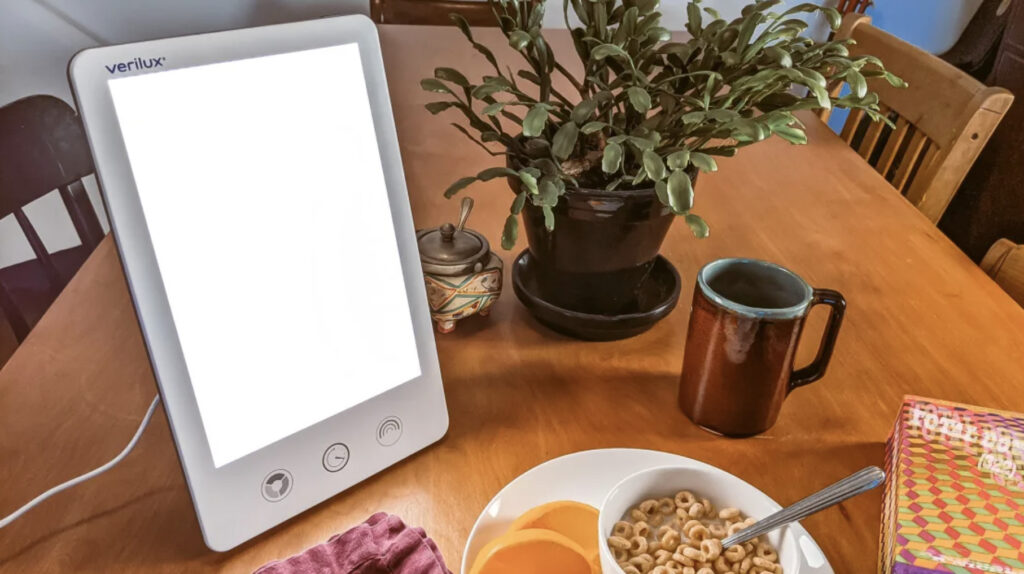
- Get some daily sunshine. You’ll feel refreshed and less bored if you walk outside, and your appetite may be more controllable. The amount of needed daylight varies for each individual. In general, the more the better. One hour daily in the morning, ideally at sunrise, is most helpful. If you’re not an early bird, several hours on the weekends may help make up for a lack of sun during the week. But the sun has to reach your eyes, so no sunglasses. If you don’t feel comfortable with the guidelines, or If going outside isn’t always an option, light therapy, also known as phototherapy, may help. Ask a mental health professional about the special lamps you can buy to make up for light deprivation. They work! Studies show they increase serotonin and help decrease depression in most people.

- Up your activity level. Just a little means a lot. During just one exercise bout (only 10 minutes), your brain releases the feel-good neurochemicals, endorphins and serotonin. They reduce pain, increase feelings of well-being, elevate your mood, and will help reduce cravings. If you’re regularly active, these benefits multiply. A brisk 30-minute walk – just as effective as running – three times a week relieves major depression just as effectively as an antidepressant in most adults. Of course, moving even more, gives you even more significant benefits.
- Hold on to your favorite dishes, just rearrange them a bit. In the winter, we tend to crave more fattening, warm, comfort foods, and fewer healthy cold foods, like salads. But your comfort foods don’t have to be fattening. My advice, which has been successful for me and my clients, is to continue eating your favorite foods, just change their balance slightly. It’s been well established that you can increase the volume and satisfaction of your meals and dishes – that is, you can eat more food for fewer calories – by simply incorporating veggies or fruits so they comprise at least 50% of the volume on your plate (eat them first to slow you down) or in your dish,
- Veggies and fruits are predominantly water. But because the water is incorporated into the food, as opposed to just a glass of water, the meal will empty from the stomach more slowly. The slower a food empties from the stomach, the more satisfied we are with it. With that in mind, all you have to do is incorporate water or broth into your main course to create a soup or stew, add veggies to a favorite stew or casserole, so that vegetables comprise half or more of the volume. Try having a simple veggie soup as a first course to any meal. Try this technique that makes veggies taste even better than French fries! These strategies – incorporating water, and adding fruits and/or veggies to your meals and dishes – allows you to enjoy your favorite foods. But it also means that you can eat more food for fewer calories. Studies show that, for each meal that you use this strategy, you save 100 calories, naturally – without even trying. That amounts to keeping off 10 lbs a year or preventing blizzard bloat. Try my sumptuous soup recipes to feel full, satisfied, but still keep calories under control.
The New, and Improved, “Once-A-Day-Keeps-the- Doctor-Away” Superfood: Move Over Apples!
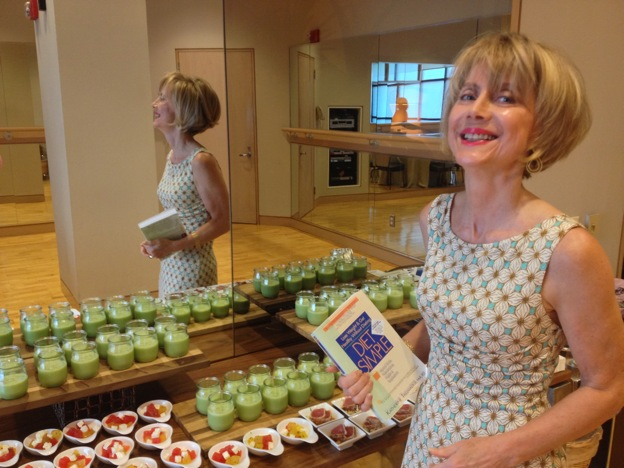
“Diet Simple Farm To Table Recipes: 50 New Reasons to Cook in Season”
While our grandmothers told us that an apple a day keeps the doctor away, modern science begs to differ. Move over apples – There’s a new boss in town. YOGURT!
For years, I wondered why my clients, whom I encouraged to eat yogurt, lost weight more easily – while also increasing muscle. They said they felt more energetic, too. Scientific research is now backing my observations of 30+ years.
Around 2010, I attended a three-day National Institutes of Health consensus conference presenting all of the research to date about the human gastrointestinal tract’s microbiome, that is, its microscopic “ecosystem” of cells. By 2010, a wealth of new data had found that its effects were so vast and profound, it could make – or break – your health.
Your body contains human cells and microbial cells (microbes). The human’s gastrointestinal microbiome also contains both types of cells. The major difference is that human cells contain genetic material inside its nucleus. Whereas microbial cells – what I’m discussing in this article – which includes bacteria, archaea, fungi, protists, and viruses, do not. Both microbial cells and human cells play critical roles in your health. Our bodies have 10 trillion human cells, but, at 100 trillion, there are 10 times that amount of microbial cells. Given the enormous number of microbial cells, or bacteria, their effect is immeasurable, and extremely influential. That said, you must make sure your healthy microbial cells outnumber the dangerous ones – big time! Here’s the full story…
There are healthy, beneficial microbes and unhealthy, dangerous types. The most dangerous microbes, the ones that cause disease, are those that are easily transmitted. They are virulent, and invasive to central organs like the blood and lungs. They’re survivors. They have a low infection dose, and are without any specific treatment or vaccine. Most of them are transmitted from animals or insects. The most dangerous microbes cause a very high death rate, are identified as high-risk agents or “biohazard-level 4” agents, and are treated at the highest level of infection protection, with strict isolation measures: Think COVID.
But most of the time, microorganisms live in harmony with their human hosts, providing vital functions essential for survival. Microbes inhabit just about every part of the human body, living on the skin, in the gut, and up the nose. They are essential for good health.
If infants are born naturally, as opposed to a cesarean delivery, and if they are breastfed, they start their lives with the highest number of healthy microbes. Whereas, their cesarean section, bottle-fed counterparts don’t develop those advantages. The higher amount of beneficial microbes give them a superior immune system, better health, and a high level of safety from numerous communicable, and non-communicable diseases in early life. That’s because the birth canal, and breast milk, contain a host of beneficial microbes that are impossible to regain as adults.
The infant’s microbial advantages continue later in life, too. Even as adults, they provide numerous advantages over people who were bottle fed, and cesarean born. The lack of those healthy microbes correlates with inflammation, and a number of illnesses, potentially effecting every organ in the body. This increases your risk for the metabolic syndrome, a group of conditions – insulin resistance, a precursor to diabetes, high blood pressure and cholesterol – and a host of other illness. More than five decades of established research has found that, if babies are not breastfed, it correlates with overweight and obesity (I learned this in college, though that was NOT 50 years ago, I’ll have you know!). The metabolic syndrome increases your blood levels of insulin, a known “growth factor.” Growth factors increase inflammation and unchecked cellular growth (cancer). Growth factors increase your chance of illnesses that can effect every organ in your body, including coronary heart disease, colon, breast prostate cancer, eye conditions, reduced bone mass, and more.
Aging is also associated with fewer beneficial microbes. Aging affects virtually all tissues and cellular circuits in our bodies resulting in frailty and death. Not only aging, but other factors, such as overweight, obesity, inactivity, and stress, also decrease beneficial microbes, leading to inflammation, compromised immune systems, susceptibility to acute and chronic illnesses causing sicknesses, hospitalizations and even death. They include infections of every type, colds, flu, COVID, reductions in vaccine effectiveness, food borne illnesses like salmonella and E-Coli, bone loss, even mental illness. To counteract those disadvantages, living a healthy lifestyle makes a significant positive difference.
THE POSITIVE NEWS
That said, you can still achieve a healthy gut filled with beneficial microbes, even if your mother required a cesarian section, or couldn’t breast feed. .
YOUR DAILY PRESCRIPTION
However, an exceptional diet and lifestyle are necessary to make up for those disadvantages. The most important foods to eat are those that naturally contain probiotics, namely, dairy yogurt, and possibly the new non-dairy varieties. Also, dairy, and non-dairy kefir. Both are the only foods associated with significant health benefits. Probiotic supplements, and foods/drinks with probiotics added, haven’t been studied adequately to determine their effectiveness. Yogurt and kefir have been found to improve wound healing, recovery from illnesses, reductions in inflammation, colon, breast and prostate cancers, and eye diseases. They have also been found to decrease the risk for conditions caused by inflammation, like Alzheimer’s, cardiovascular disease, osteoporosis, irritable bowel syndrome, diarrhea and/or constipation, bone and dental health, infectious diseases, and others.
But probiotics can’t work alone. To be effective, you also need foods containing prebiotics to create the healthy gut you need. Prebiotics nourish probiotics. Together they form the critical prebiotic/probiotic duo creating a microbiome teeming with healthy microbes that achieve the superior level of beneficial microbes that fight off chronic and acute diseases. Only then can you achieve maximum health advantages. Prebiotics can be found in various high fiber plant foods as diverse as almonds, agave, barley, wheat, oats, garlic, leeks, onions, flax seeds, artichoke, asparagus, bananas, and more.
Breast milk contains both prebiotics and probiotics, which is why it is so protective.
Problem is, most Americans have an unhealthy diet that increases the damaging microbes in their gut. They don’t eat enough, if any, foods high in either pre- or probiotics. This may explain our high incidence of chronic illnesses.
Based on research, and my own observations, I believe eating yogurt daily is the easiest way to make up for the healthy gut we abused by eating the typical American diet growing up – and even now. Can you imagine anything easier? (besides dreaming, wishing, and hoping?)
All you need to do is include yogurt, a few veggies, fruits, almonds, or oat-based cereals (Cheerios, oatmeal) here and there. Try “Katherine’s Simple ‘Oatmeal Cookie’ Oatmeal: an Easy Step-by-Step Guide” That Even Your Kids Will Love!. How about this great dessert? “Chocolate Covered Peanut Butter & Oat Balls.” It’s a fun activity for you kids, too! (don’t tell anyone it’s healthy)
As of yet, there is no reliable clinical test any doctor can use to measure your gut microbes, or the health of your microbiome. We don’t even know everything that we need to be looking for. The gastrointestinal tract is still quite mysterious and idiosyncratic, so your best strategy is having the best diet and lifestyle habits you can.
I work with many clients with gastrointestinal issues, and their solutions vary widely, but, in my experience, when their nutrition is tailored to their individual needs, their lifestyle, and medical condition, a personalized nutrition plan makes a profound difference – virtually to a person.
If you think you don’t like yogurt, I’ve found that if you do some taste testing and experimenting, you are guaranteed to find one or more that you enjoy. There are savory, and sweet ways to try it.
Savory variations: Use Nonfat, Plain Greek Yogurt (my favorite is Fage) in place of sour cream. Make dips, for instance, Onion Dip, by mixing in chopped/minced onions, salt & pepper. How about a spicy dip by swirling in Sriracha sauce. Create an Italian version with pesto. Use it in burritos and tacos. In many parts of the world, yogurt is eaten together with spicy dishes, especially with chopped cucumbers. With curry, and many Middle Eastern dishes, for example. I love placing a dollop on my potatoes (instead of sour cream) and soups. My technique for eating it with soups and savory dishes is to place a little yogurt together with the accompanying food in one spoon. The cool and the hot together are delicious complements to each other. Stirring all of it together, well, it doesn’t bring the added excitement that I crave in my food. Remember to add a little (Iodized) salt & pepper, or it may taste too bland. In the summer, Cool Cumber Soup with Dill or Cilantro, and Swedish Cucumber Salad with Dill are party favorites. In fact, whenever I make my mother’s Cucumber Salad, it disappears quicker than anything else. It can lead to all out war between the party’s, normally civilized, competitors.
Of course, we all know about the sweeter versions. Fruited yogurts, lemon, vanilla, chocolate, you name it. Give all of them a try. ANY yogurt contains probiotics. And please, don’t worry about the small amount of jam in yogurts. Studies show fruited yogurt doesn’t raise blood sugar significantly, so they’re not associated with high blood sugar levels, insulin resistance, or the illnesses that go along with it.
I enjoy it as part of desserts, too. A traditional Swedish meal is crepes with sour cream and lingonberries. But I’ve found that my favorite Fage Greek Yogurt is an excellent, even better, substitute for sour cream. Swedish Waffles, Vanilla Bean Yogurt and Fresh Summertime Peaches/Fruit, while not 100% healthy, still gives me an opportunity to eat yogurt in a delicious way – as an occasional dessert, or decadent breakfast.
After all, everything you eat must be DELICIOUS! That’s the only way we can continue eating healthfully, in a sustainable way.
Golden Brown, Sweet Caramelized Cabbage for “The Luck O’ the Irish” on St. Paddy’s Day!

Think you don’t like cabbage? Then you’ve never tasted caramelized, golden brown, stir fried cabbage. If you are not a lover of cabbage, you will become a boisterous believer after you try this very simple recipe, and so will any person you serve it to. But hurry! St. Patrick’s Day on March 17th would be the ideal time to get a taste of the “Luck O’ the Irish.” Any time I serve Caramelized Cabbage, my guests ask, “What is this? It’s delicious!” They practically fall out of their seats when I reveal, “It’s sautéed cabbage.”
It tastes like candy, I promise!
Katherine’s Caramelized Cabbage
My favorite variety of cabbage is the milder, more tender Savoy Cabbage, but any type works brilliantly prepared this way.
Directions:
In a large skillet (iron works best), heat a couple of tablespoons of Canola Oil on medium/high. The temperature has to be hot enough to evaporate the water leaching from the cabbage as it cooks. For exceptional cabbage, or any vegetable, allowing it to drown in its own water leads to your steaming it instead of sautéing it. Steaming does not achieve the mouth-watering flavor you crave. I learned this tip from celebrity chef, Alton Brown. Every vegetable I’ve served using this method gets devoured. And since veggies should dominate your meals, they have to taste good, well, not just good: Mind blowing!
I digress…
 Once the oil is hot (“Don’t add anything until the oil is hot,” says Seasons Culinary’s Chef, Janis McLean), add the chopped (not grated) cabbage. Chop the cabbage into rough chunks (Definitely more Irish-like). No neat or perfect, petite cubes allowed (too British-like for our purposes here). Add onions and garlic if you wish. Add diced red bell pepper for color, too. Sauté until golden brown while constantly stirring. This may take about 25 to 30 minutes so if you’ve got kids (slaves) around, throw them into the mix. Keep scraping the bottom of the pan. Don’t worry if the pan is getting brown. Just keep scraping and tossing. Let sit for 10 or 20 seconds between tosses to caramelize the cabbage nicely, but don’t let it burn. Add a pinch of salt and pepper after about 15 minutes of sautéing. Keep sautéing until the mixture is nicely browned and tastes sweet.
Once the oil is hot (“Don’t add anything until the oil is hot,” says Seasons Culinary’s Chef, Janis McLean), add the chopped (not grated) cabbage. Chop the cabbage into rough chunks (Definitely more Irish-like). No neat or perfect, petite cubes allowed (too British-like for our purposes here). Add onions and garlic if you wish. Add diced red bell pepper for color, too. Sauté until golden brown while constantly stirring. This may take about 25 to 30 minutes so if you’ve got kids (slaves) around, throw them into the mix. Keep scraping the bottom of the pan. Don’t worry if the pan is getting brown. Just keep scraping and tossing. Let sit for 10 or 20 seconds between tosses to caramelize the cabbage nicely, but don’t let it burn. Add a pinch of salt and pepper after about 15 minutes of sautéing. Keep sautéing until the mixture is nicely browned and tastes sweet.
Cabbage, like most vegetables, is about 90% water, so it will cook down a lot – and in the process keep you slim and trim because it fills you up with very few calories.
Use at least a whole head. If you have any left, toss it into soup, or make your own simple soup by adding broth. You could call it, if you felt generous at the moment (I did not mean to doubt your generosity), “Katherine’s Cabbage ‘Diet’ Soup.”
This is perfect served the traditional Irish way on St Paddy’s Day: With cabbage, potatoes, carrots and corned beef. If you’d rather not eat red meat, chicken and fish are excellent choices.
But most importantly, don’t forget the green Guinness Stout, nonalcoholic beer, Irish Whiskey, or smoothie.
Enjoy! And may the road rise up to meet ye…
Our Double Pandemic: One Feeds the Other
- At September 13, 2020
- By Katherine
- In Articles, News
 0
0
Does your blood measure 50 to 75 ng/ml of Vitamin D? Why is this critical to surviving COVID? COVID-19 science is advancing rapidly. One new and exciting discovery comes as no surprise: Vitamin D deficiency – a pandemic in many experts’ views – leads to significantly more COVID-19 hospitalizations, poor outcomes and lower survival rates, according to several studies and reviews published in Nutrients, The European Journal of Clinical Nutrition, Nutrition & Food Science (Nfs) Journal, Lancet Diabetes Endocrinology, Aging Clinical and Experimental Research, Medicine in Drug Discovery, and others. It’s such a no-brainer it is a must to have your Vitamin D level checked out with your doctor. In fact, please make your appointment today! That’s because if you don’t live near the equator, virtually no one has adequate Vitamin D blood levels. And – no – 30 ng/ml (what laboratory reports deem as fine) is not enough. Don’t be satisfied with taking supplements. Everyone’s supplement needs are different, so you have to have your blood checked.
Over the past 25 years or so, I’ve encouraged my clients, family and friends to check their Vitamin D blood values. Vitamin D deficiency is the norm in our modern culture, and it could be lethal. Adequate Vitamin D, the “sunshine vitamin” may promote the prevention and treatment of our most prevalent and life-threatening diseases, such as type 1 and type 2 diabetes, heart disease, hypertension, infectious diseases, cancer, glucose intolerance, even multiple sclerosis… and now it’s been established: COVID-19, too.
Even though medical labs have 30 ng/ml as normal (which is only enough to prevent rickets), most experts believe it is not high enough to get all of its benefits. The most recent National Academy of Sciences Food & Nutrition Board recommendation for your blood levels is between 50 and 75 ng/ml. To achieve this, I recommend taking anywhere from 1,000 to 4,000 IU (maximum safe upper limit) daily, depending on your blood value and your doctor’s recommendations.
Vitamin D Boosts Muscle Strength, Power & Velocity While Lowering Body Fat
Good Grub For the NFL Season Opener! Tacos & Chip Dips
On September 11th, when Americans collectively remember and pay tribute to the 19th anniversary of America’s devastating loss of lives, we can also celebrate two of our favorite past times, food and football. You could say it’s a bittersweet All-American day.
I’ve developed many recipes over the years. These are two of my favorite easy, delicious and nutritious that I believe are perfect for special sports events, family gathering and prayers.
Quick & Easy Soft-or Fried-Tacos with Cheese, Fresh Tomatoes, Onions & Jalepeño Peppers
Eat These 13 Foods to Prevent COVID-Summer Brain Drain
- At August 16, 2020
- By Katherine
- In Articles, News
 0
0
In this NBC4 video, Katherine shares strategies for preventing “summer brain drain” by keeping nutrition on track (the video was produced before COVID mask-wearing)
Brain drain: During these turbulent times, who isn’t feeling some degree of stress, sadness, malaise, fear, anger, exhaustion or disappointment at times? I personally will admit to … all of the above! Normally, these “fight or flight” reactions are short term and protect us from immediate danger. But if prolonged, they can disturb your immune, digestive, cardiovascular, sleep, and reproductive systems. You may also experience digestive symptoms, headaches, sleeplessness, sadness, anger, or irritability, according to the National Institute of Mental Health. To counteract these almost inevitable feelings, for the long haul, I recommend you find some sustainable – yet very simple – coping strategies that fit your lifestyle and that you enjoy.
Foods play a critical role fighting and neutralizing the ravages of stress and its damage to your health. There are 13 foods, in particular, that science has found are especially effective for reversing its harmful effects.
Meditative techniques can be simpler than they sound, like music, tai chi or yoga. Studies show many forms of “meditation” are effective, In the video above, I discuss some foods and eating habits you can try this summer to help you and your family.
It’s Peach Season! 6 Peach Recipes Your Family Will Love
I’ll never forget my first trip to Italy. I was 19 and touring solo through Europe by train with the Eurail Pass. Despite the Italian men giving me a scare – pinching, grabbing, kissing and chasing (I think it goes without saying… with no encouragement from me – oy!) – Rome was so stunning, my wildest dreams couldn’t have conjured up such a place.
One of my fondest memories was of the peaches sold by fruit vendors in the Piazza Campo De’ Fiori. I’d never eaten a peach that was so sweet, tender and juicy that its nectar drizzled down my arms. Truly a revelation! I became so excited about peaches that when I got home, I rushed to the grocery store for some. But after one bite, my heart sank. I realized that I’d never have such an extraordinary peach again.
That is… until locally sourced Farmers Markets came to be.
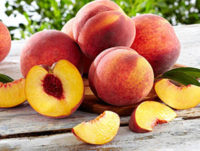 The advantage of Farmers Markets is that the fruits and vegetables are grown nearby so they can be picked at peak ripeness. And that’s when they are the most delicious and nutritious. Since peaches are in season now, I’m eating several each day. Peaches can be featured in desserts, salads, meat or other savory dishes. Here are some of my favorite peach recipes, to keep you excited about peaches!
The advantage of Farmers Markets is that the fruits and vegetables are grown nearby so they can be picked at peak ripeness. And that’s when they are the most delicious and nutritious. Since peaches are in season now, I’m eating several each day. Peaches can be featured in desserts, salads, meat or other savory dishes. Here are some of my favorite peach recipes, to keep you excited about peaches!
Summer Peach and Fresh Kale Salad with Toasted Almonds and a Balsamic Vinaigrette
Summertime Peach Crisp with Roasted Nuts, Dried Fruit & Ginger
Layered Fresh Peach & Cheesecake Parfait
Honey & Brown Sugar Roasted Peaches
Honey & Brown Sugar Roasted Peaches
Lisa Yockelson’s Honey and Brown Sugar-Roasted Peaches
Excerpted from Diet Simple by Katherine Tallmadge
6 Servings
The juice-ripe peaches are sweetened with a mixture of brown sugar and honey, enriched with a little melted butter, and mellowed with vanilla extract and peach nectar. Enjoy the peaches as is, or with a dollop of vanilla yogurt or ice cream.
Unsalted butter, for the baking dish
6 firm but ripe medium peaches, halved and pits removed
2 Tablespoons firmly packed light brown sugar
2 Tablespoons mild honey, such as clover
2 Tablespoons unsalted butter, melted
1 teaspoon vanilla extract
1/3 cup peach nectar (or 2 Tablespoons more, as necessary)*
Preheat the oven to 400 degrees F. Adjust the oven rack to the lower third level slot. Lightly butter the bottom of a 12 to 14-inch non-reactive ovenproof baking dish.
Place the peaches rounded-side down (cut side up) in the dish. Combine the sugar, honey, melted butter, vanilla, and peach nectar in a small mixing bowl. Spoon the mixture over and about the peaches.
Roast the fruit for 20 minutes, or until gently softened (but not mushy), and the juices have lightly condensed. Begin checking on the fruit at 15 minutes; if the peaches are not juice enough on their own, they may not give off enough juice, so you may need to add 2 tablespoons more peach nectar at this time. Roast an additional 5 minutes, as necessary. You can also glaze the fruit under a broiler for a few seconds until the tops glisten. Serve the fruit warm.
*If you cannot find peach nectar or peach juice, apricot nectar can be used.
The recipe for this essence-of-summer fruit dessert comes from Lisa Yockelson, baking journalist and author of the award-winning BAKING BY FLAVOR (New York: John Wiley & Sons, Inc., 2002).
Katherine’s Virtual “No-Cook” Cooking 01 Class: Spring into Action!
Would you like to create some fun and amazing recipes that take only three or four ingredients, less than 15 minutes – and don’t even require cooking? No-Cook Cooking 01 will teach you how to cut and prepare onions, tomatoes, peppers, carrots, celery and fresh herbs, resulting in Fresh Salsa, Guacamole, and a Creamy Yogurt Dip, crowd favorites! On top of that accomplishment, these basics will be a foundation for creating hundreds of treasured recipes your family and friends will love. After learning these simple skills, you will discover some of those recipes in my No-Cook Cooking 02 class.
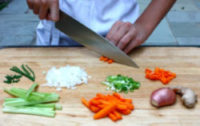 My No-Cook Cooking 01″ Class is for you if you sometimes:
My No-Cook Cooking 01″ Class is for you if you sometimes:
- feel overwhelmed in the grocery store wondering what on earth you need or should buy,
- feel nervous about cooking,
- feel insecure about using knives and kitchen gadgets.
When you’ve registered, I will email you a list of the ingredients and tools you will need for the class. You can also participate by simply watching. If you’d like, repeat the class any time until you feel confident to move on.
To talk to Katherine about the class and/or to sign up, email Katherine at: Katherine@PersonalizedNutrition.com





